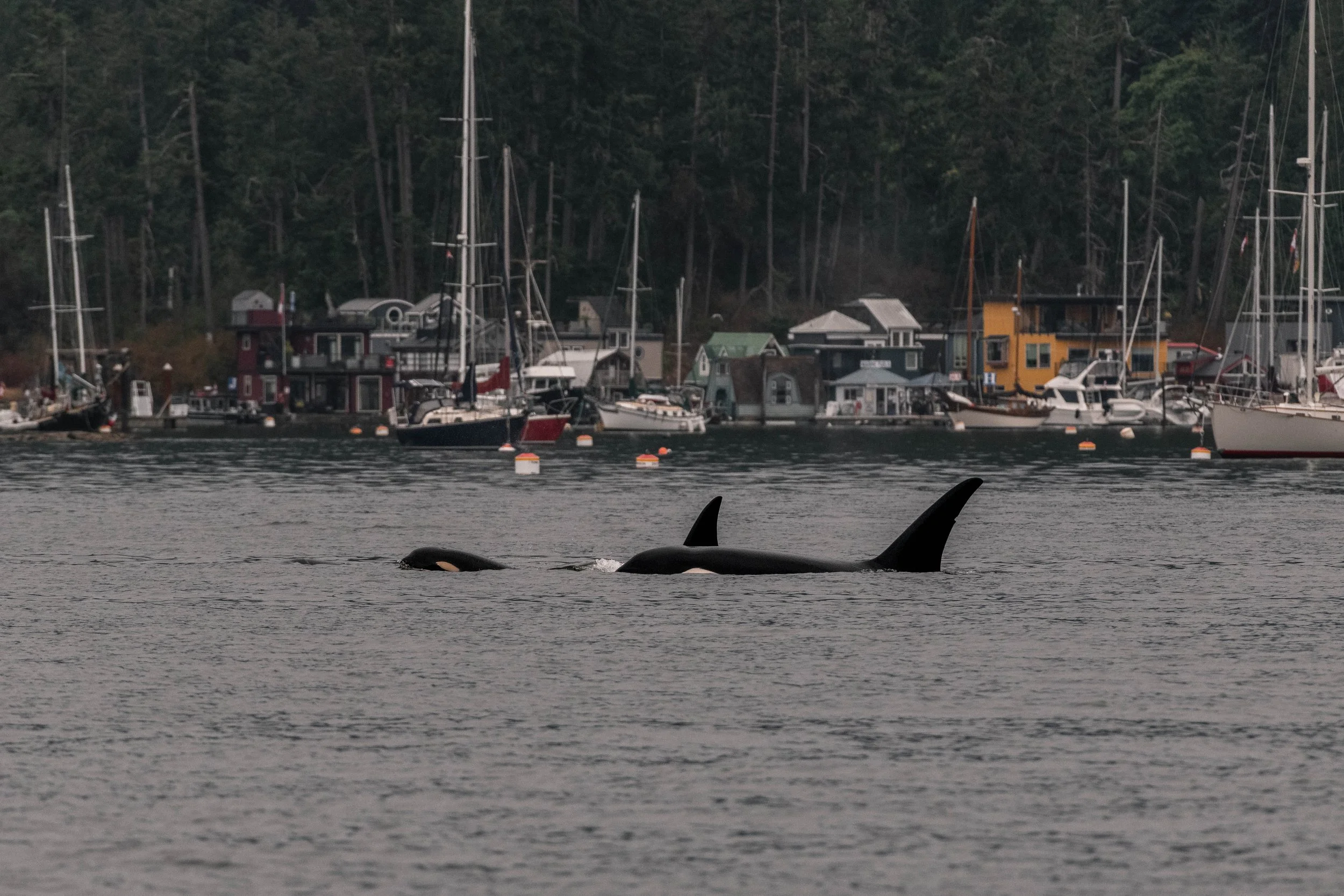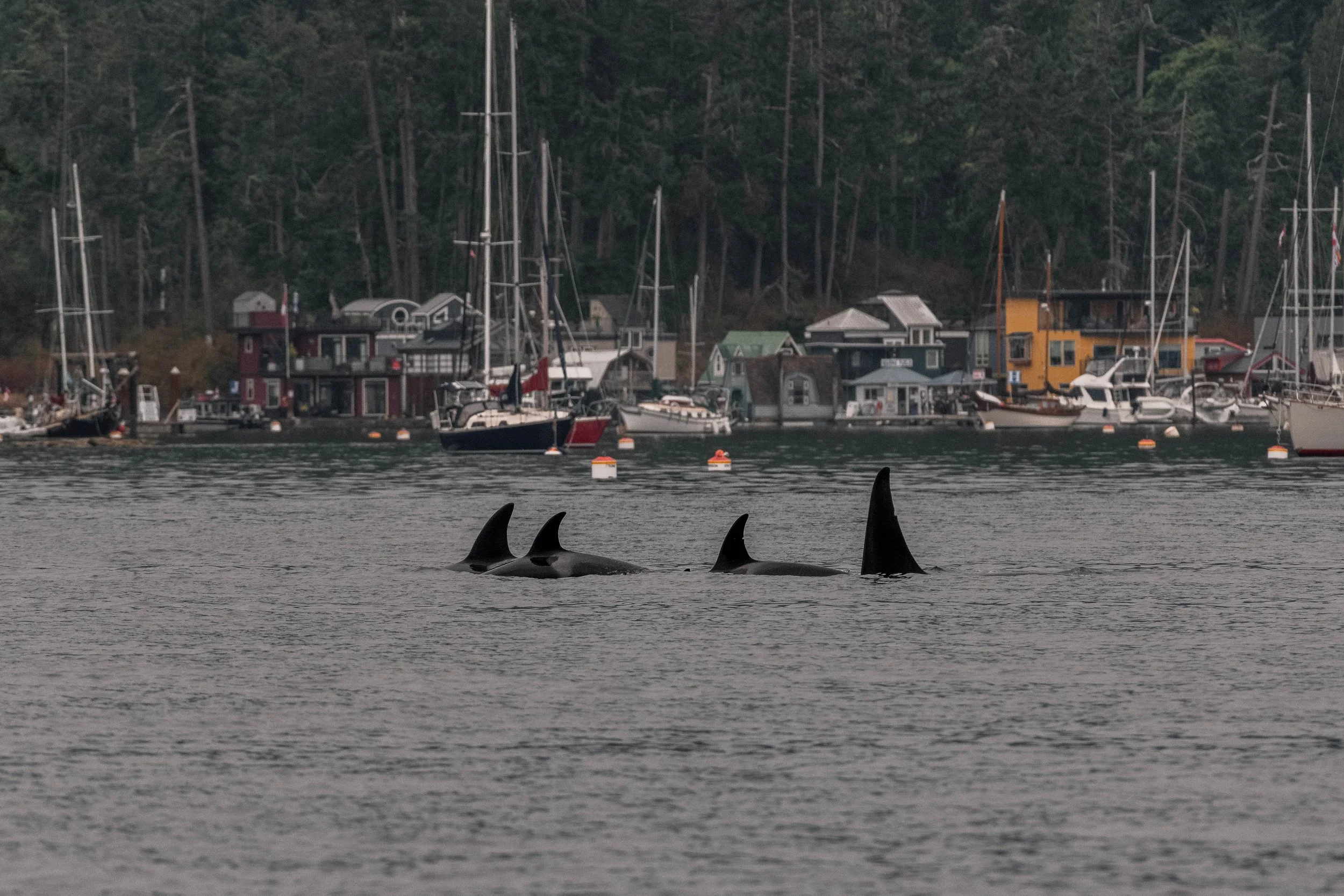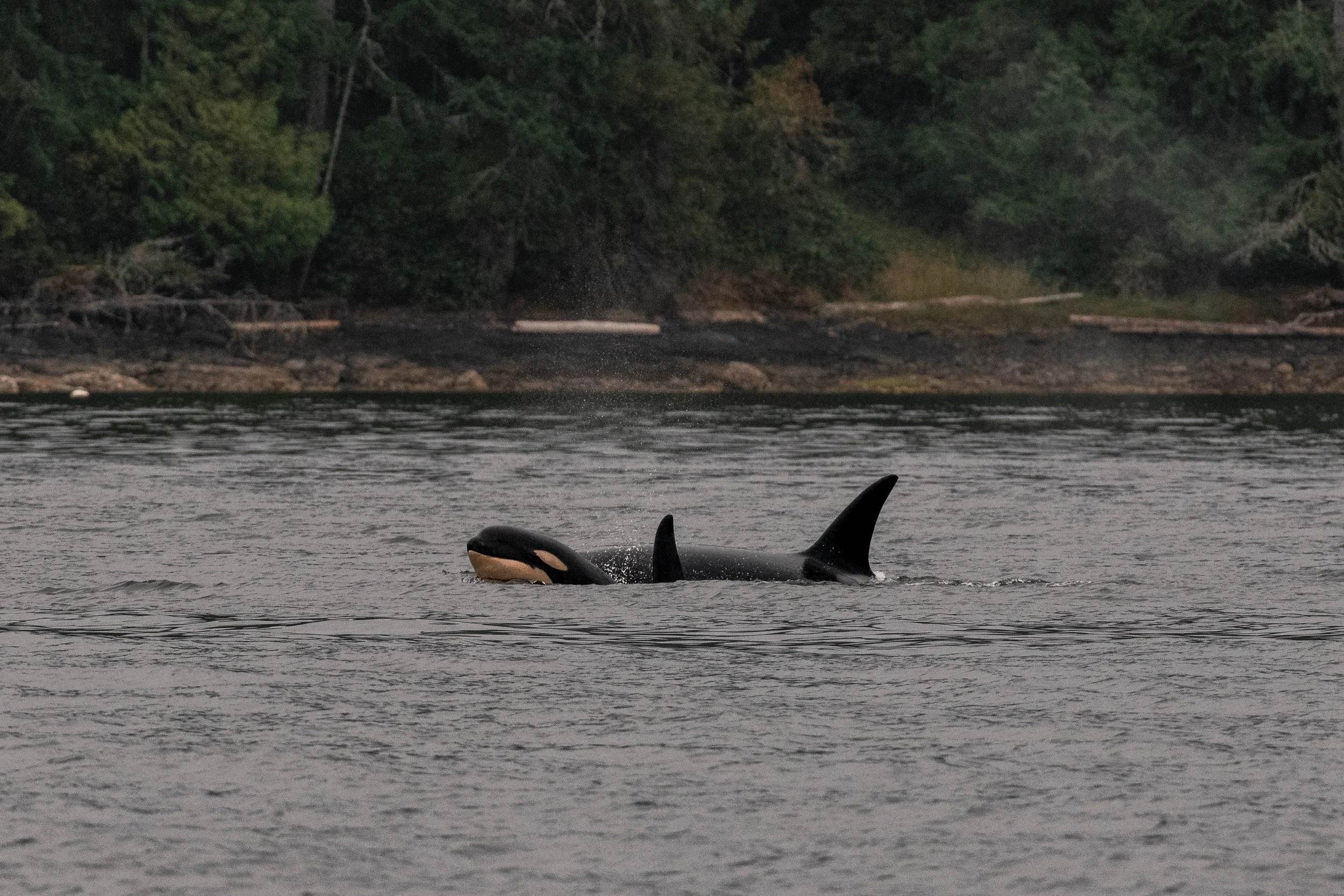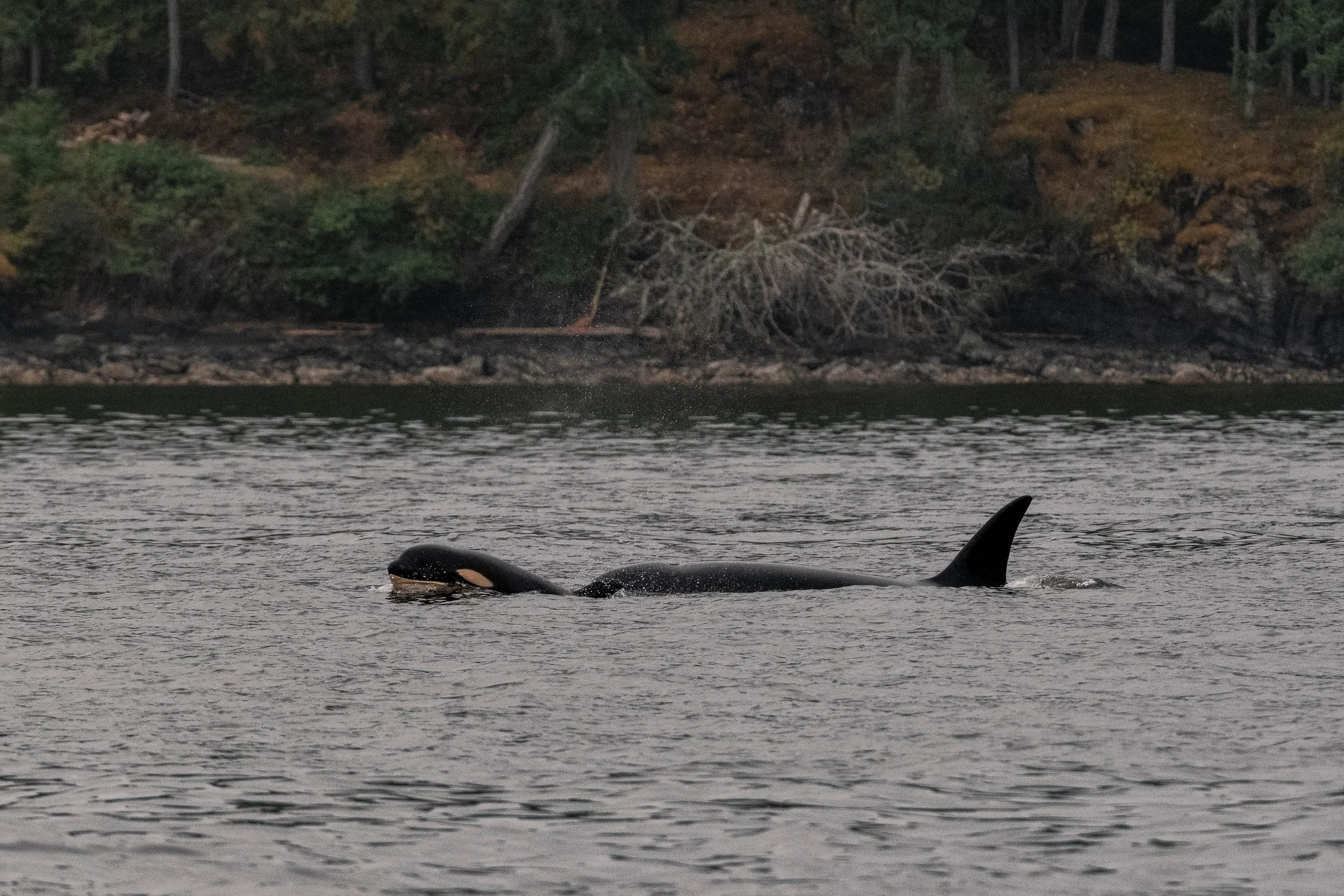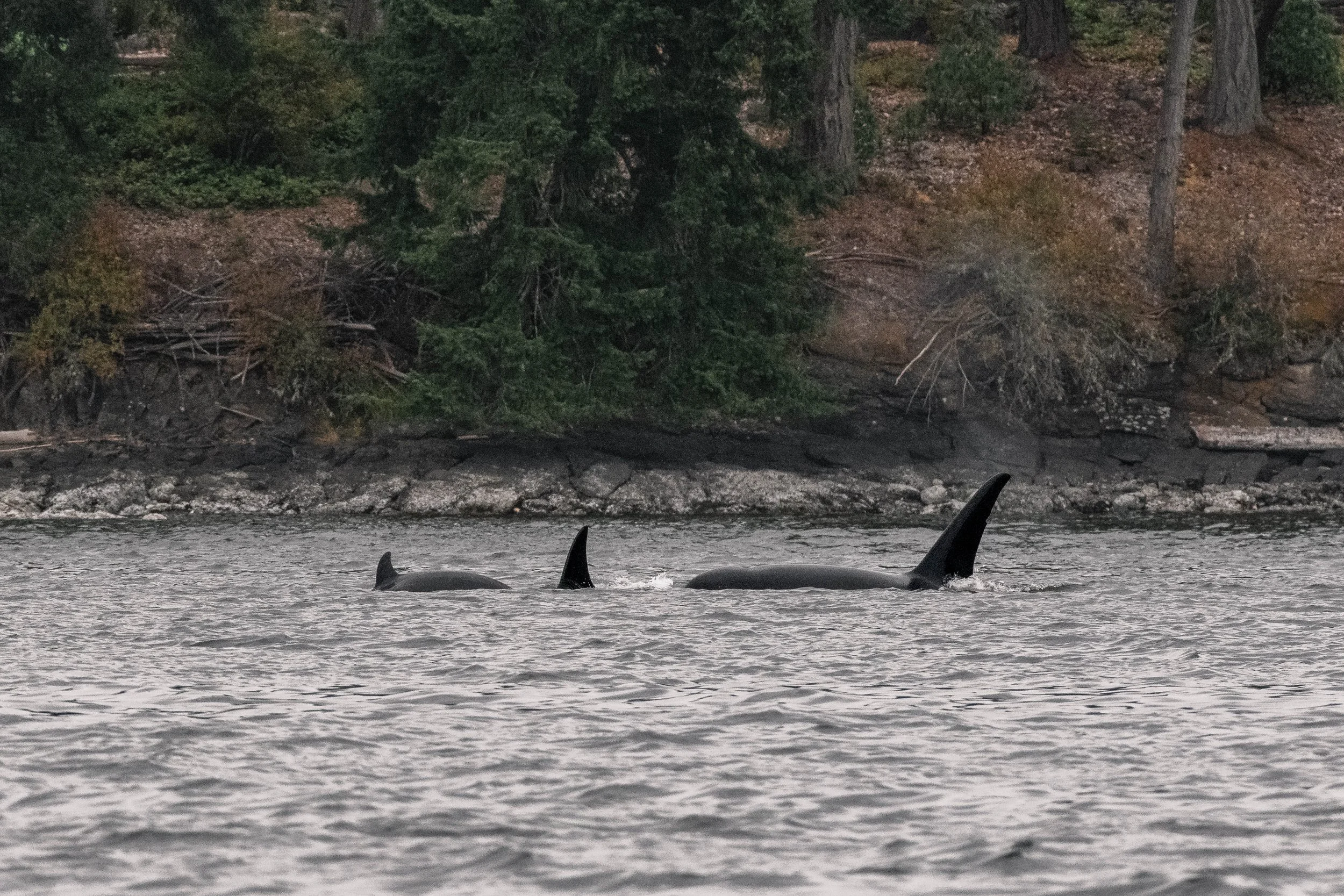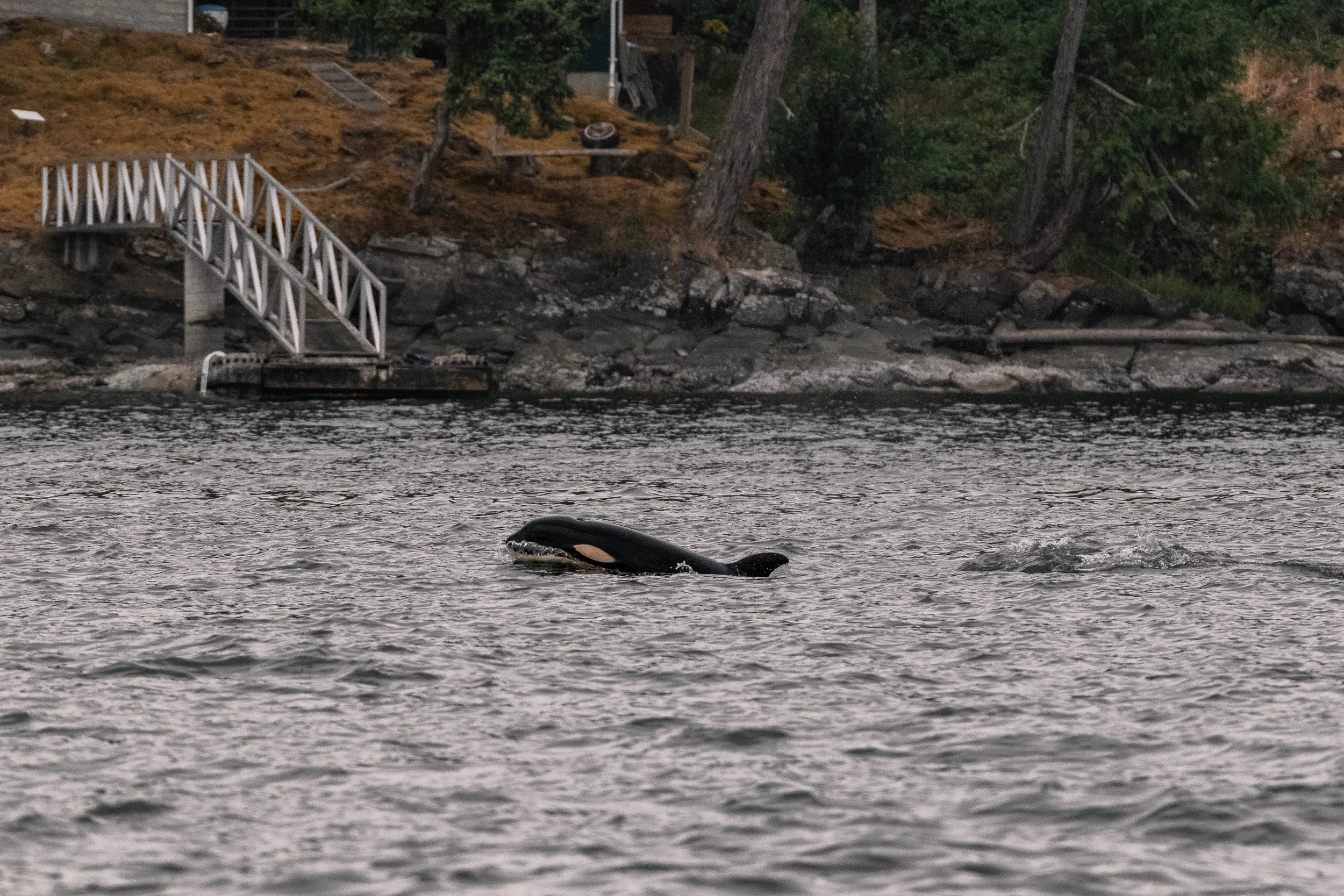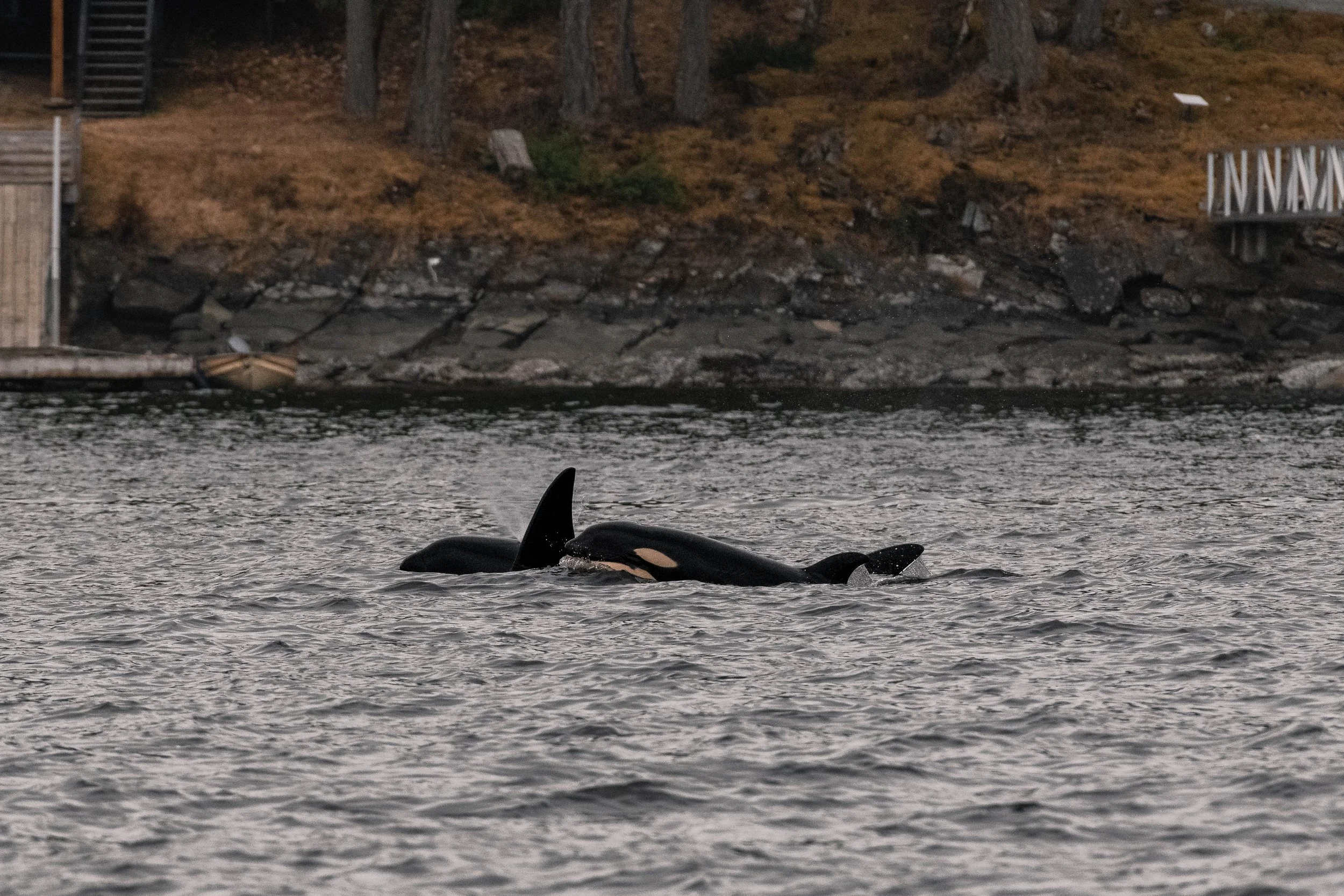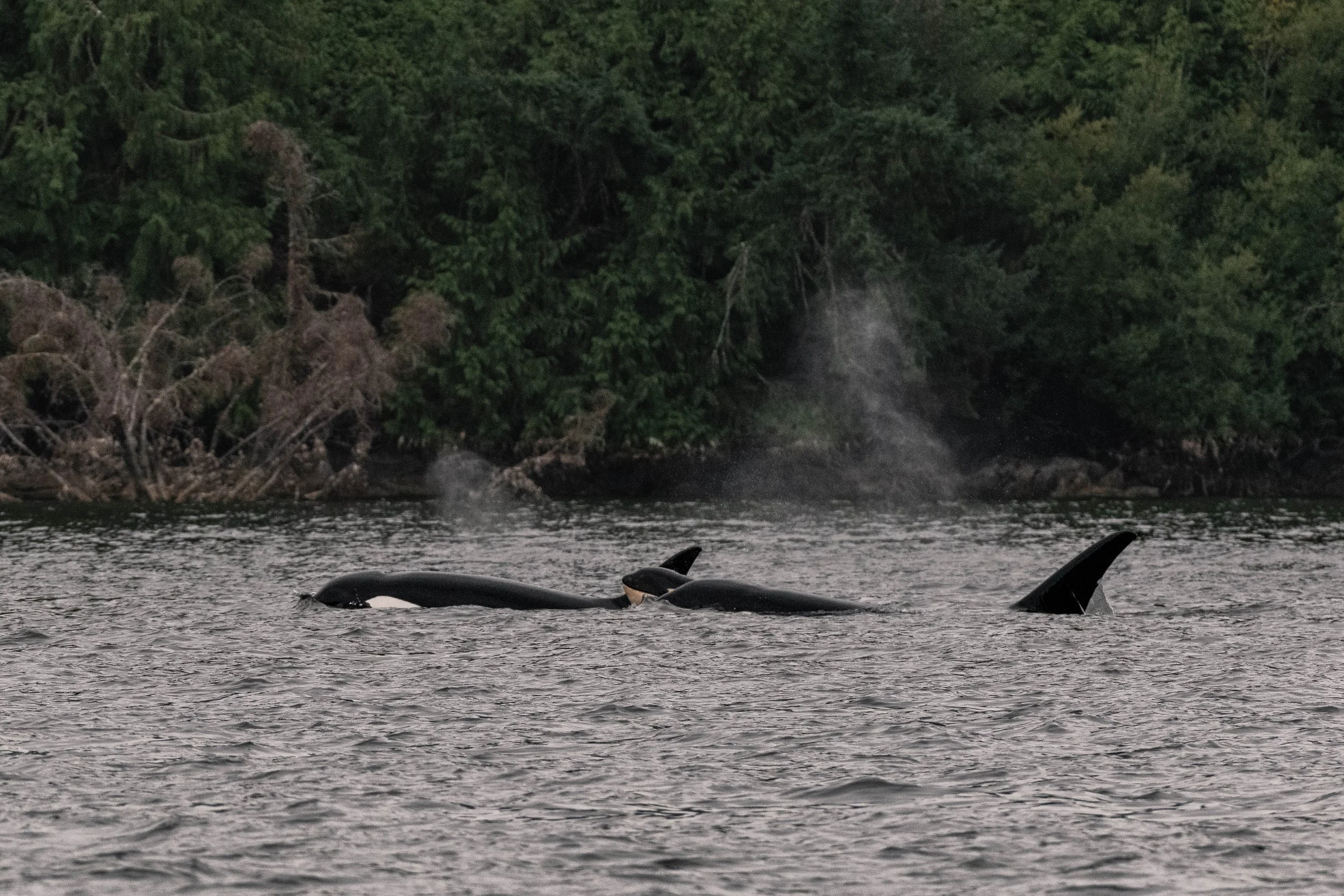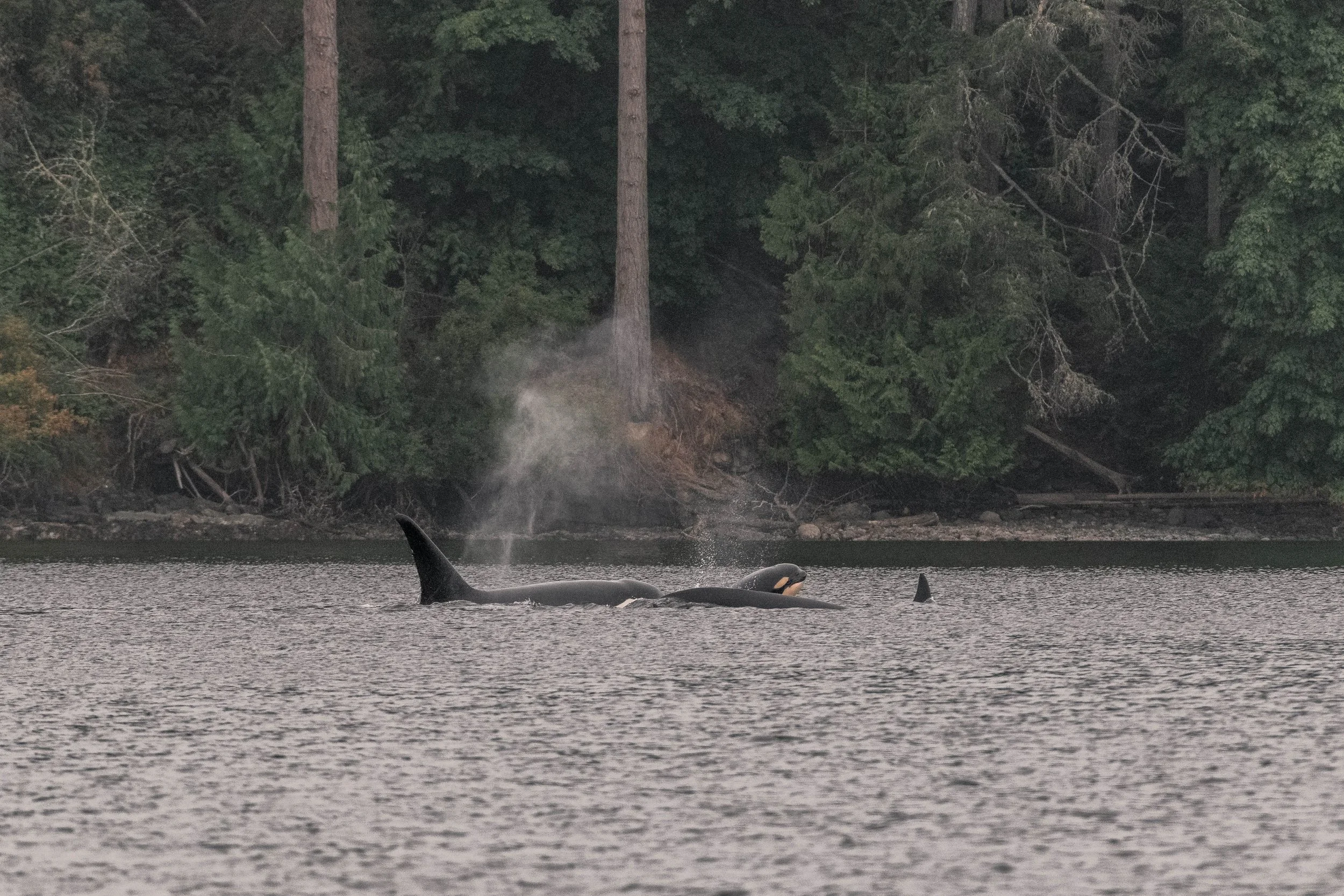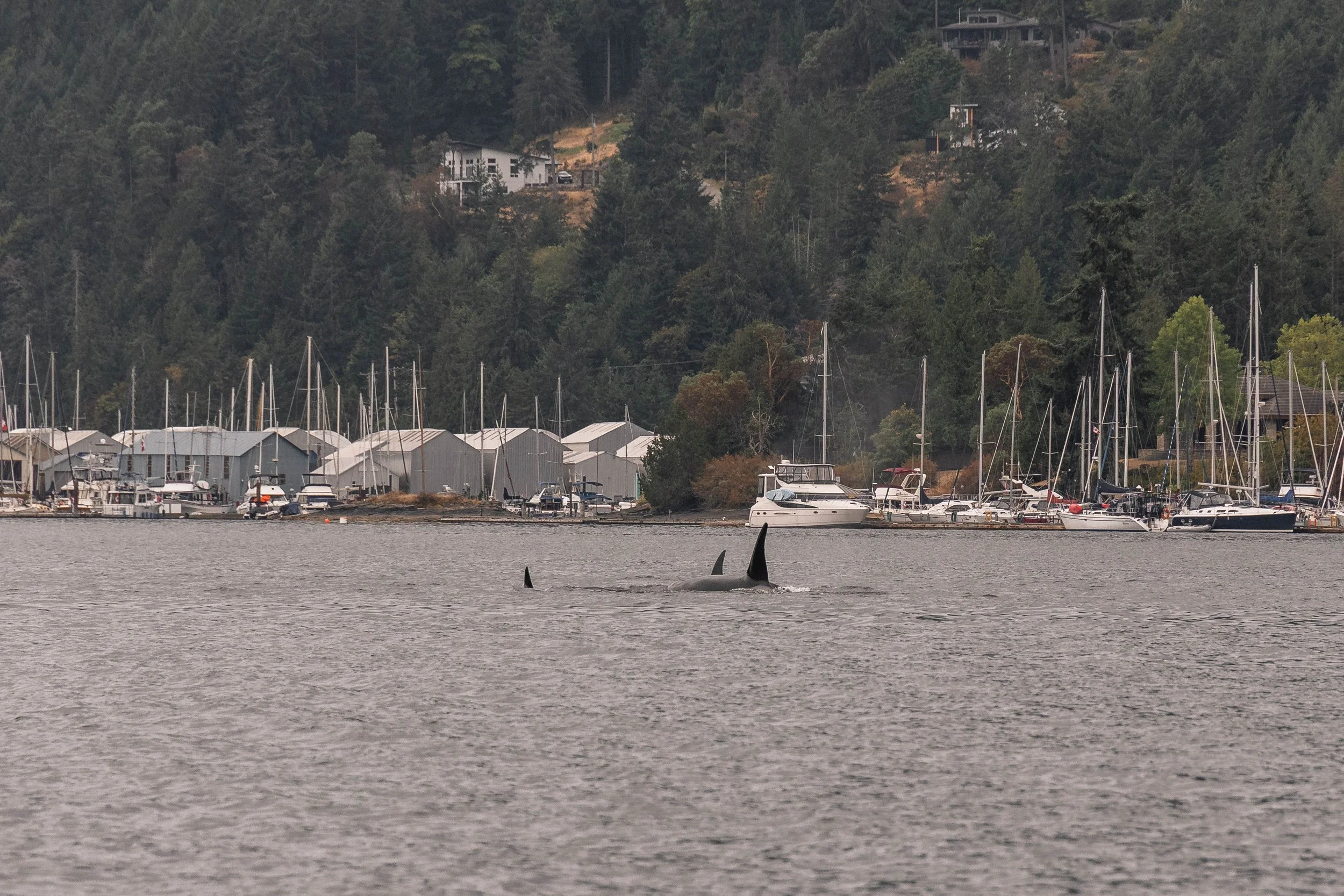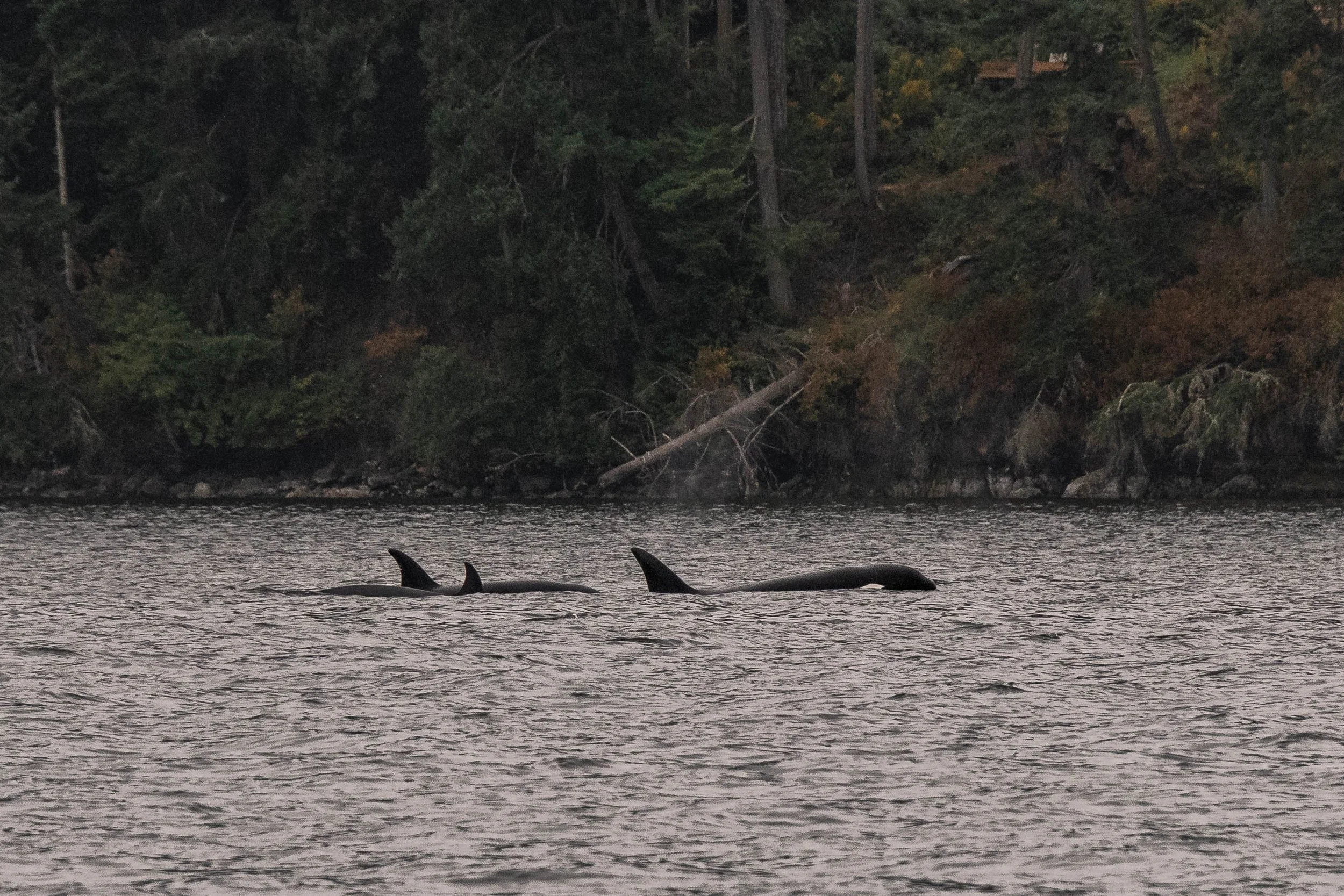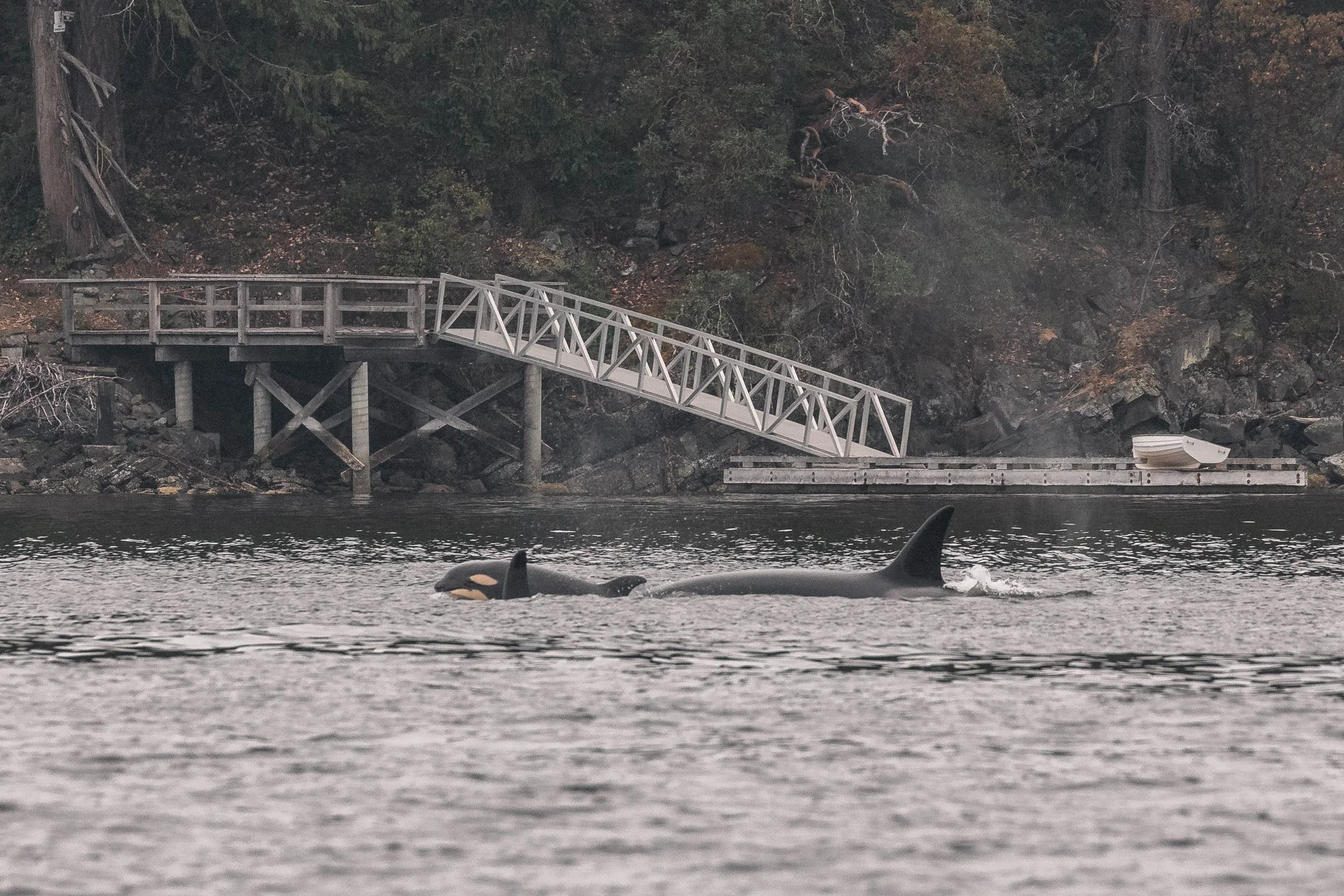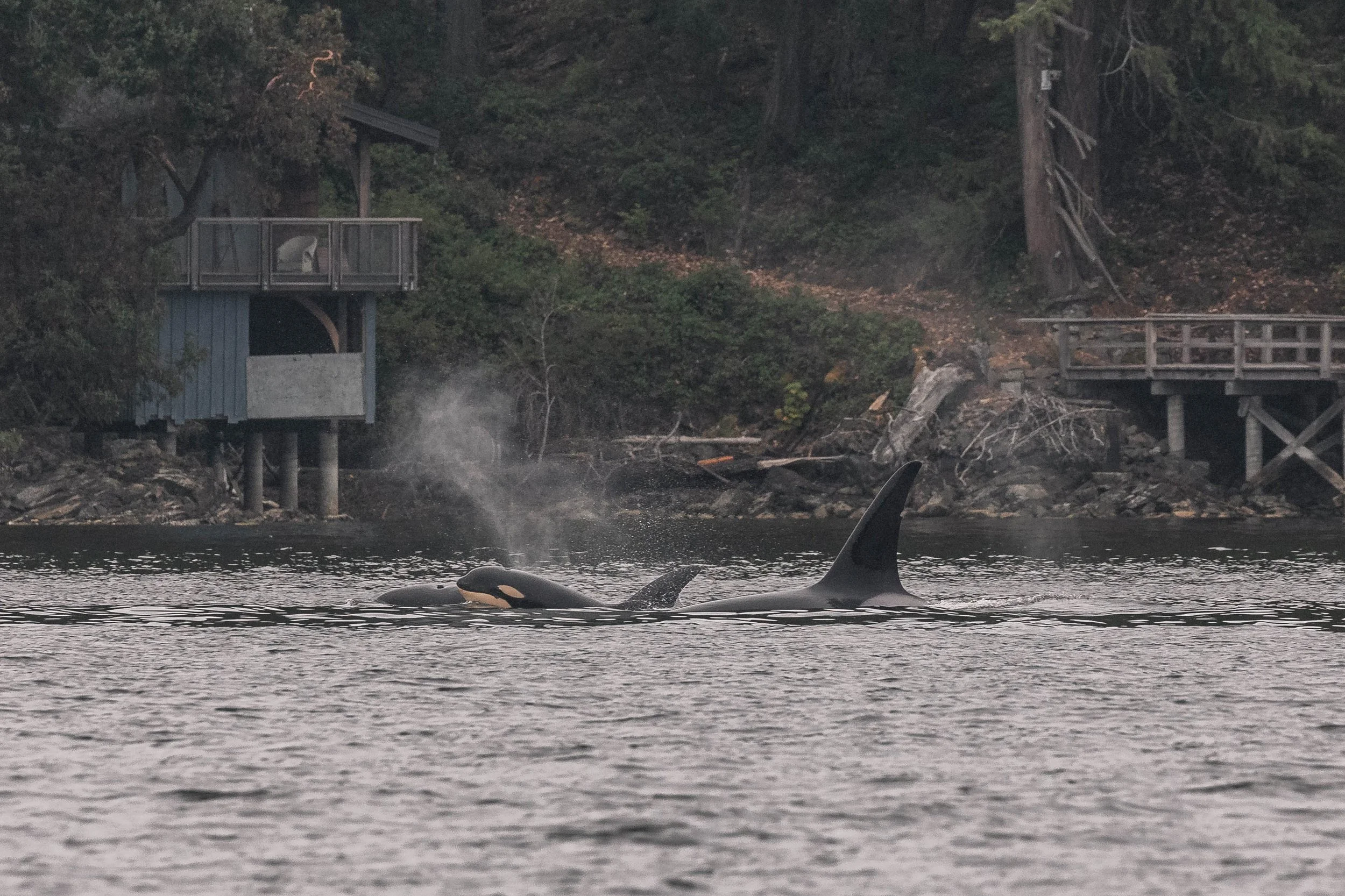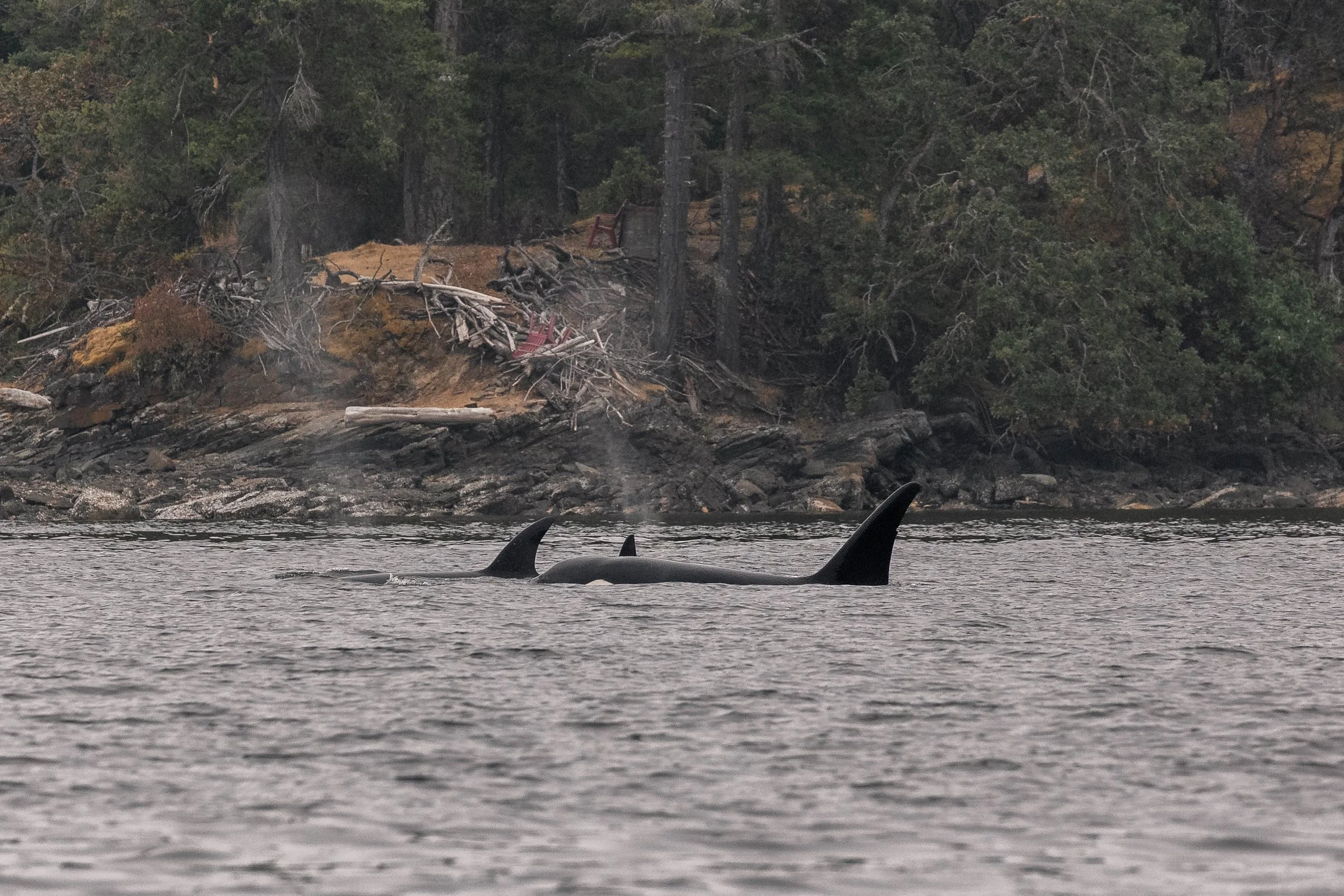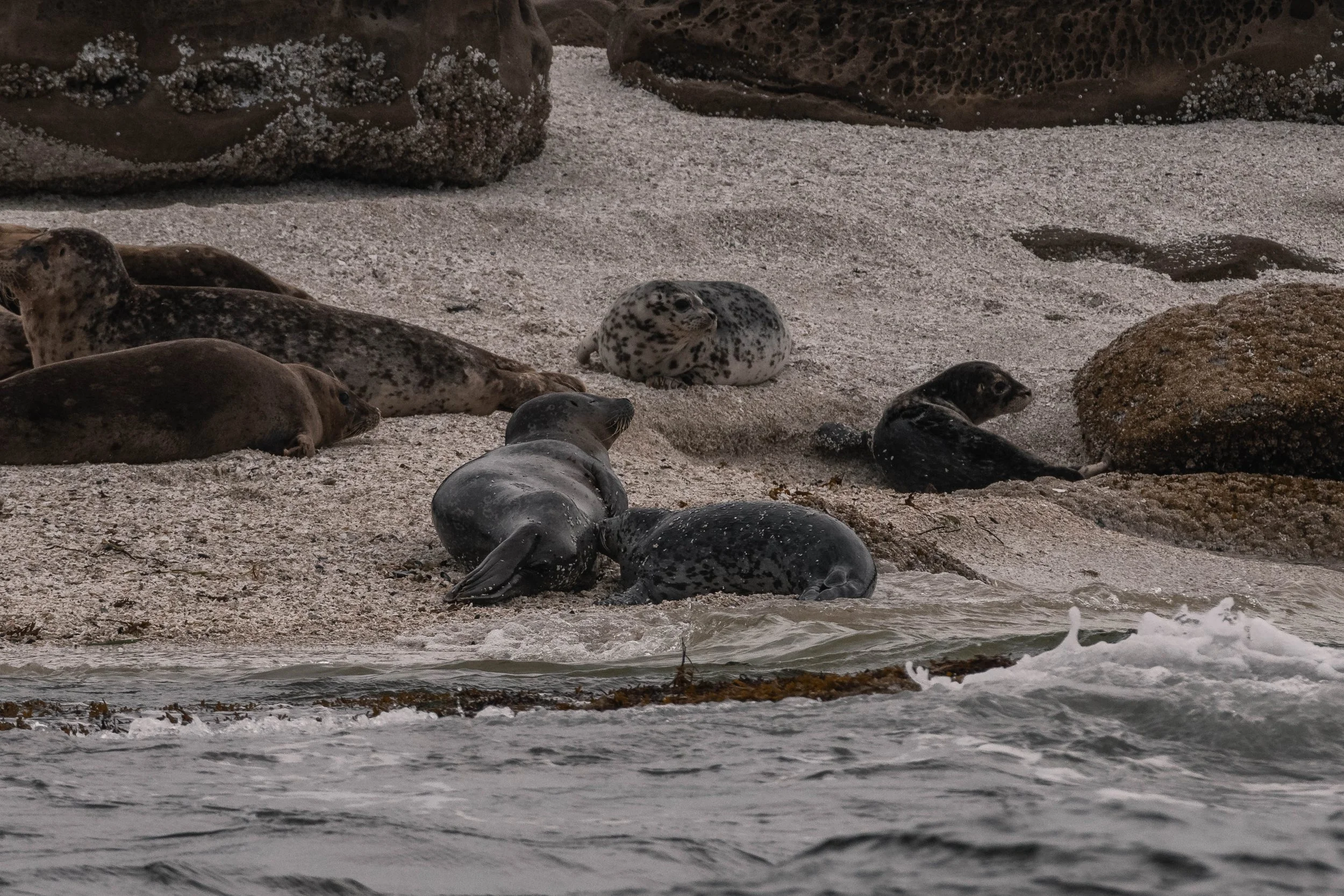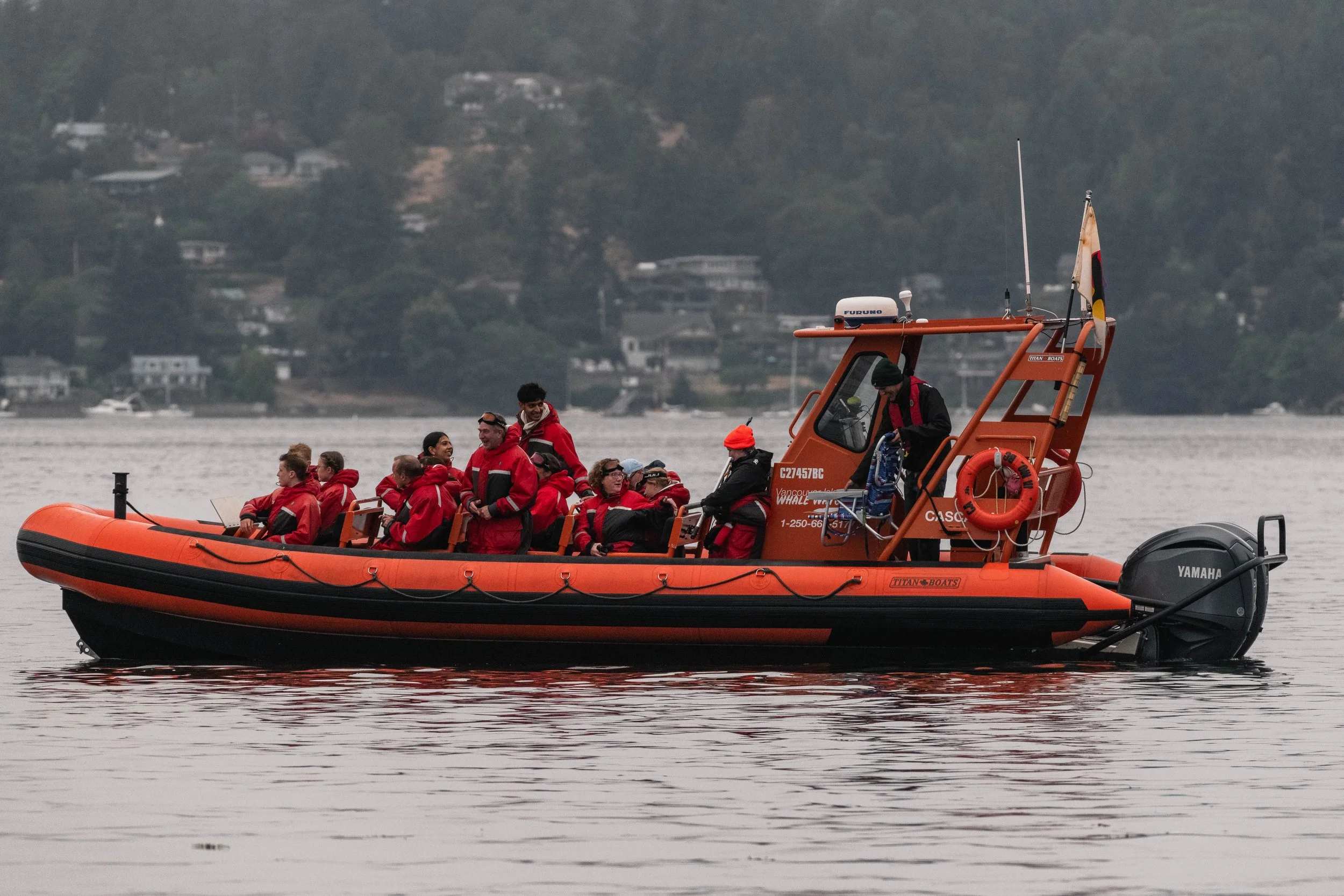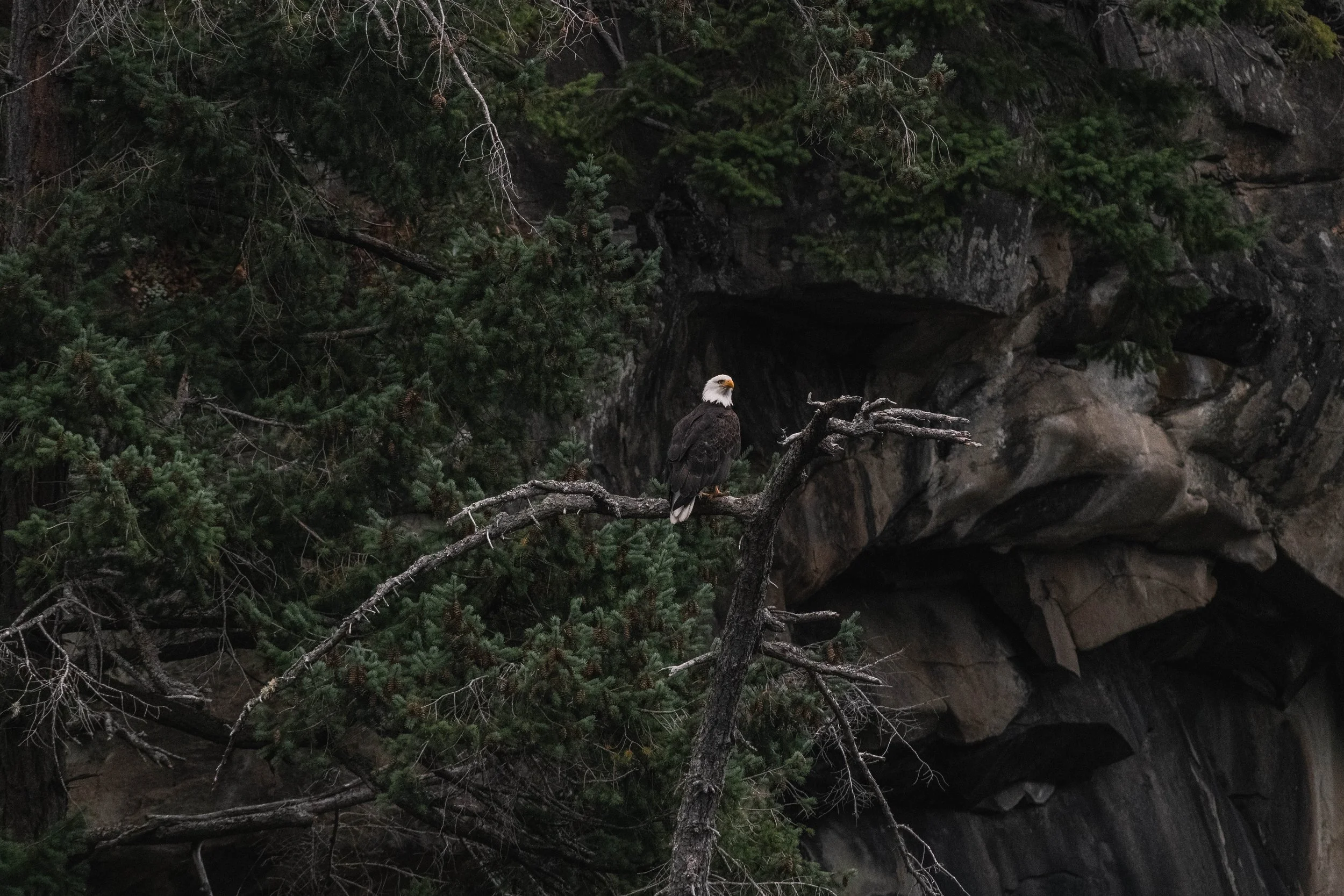August 14, 2025, 3:30 PM - A West Coast afternoon with orca!
The skies were dark, hinting at the rains to come, but that didn’t dampen our spirits as our fleet headed out to begin searching for whales! Our journey took us southbound, crossing through Dodd Narrows and into the Southern Gulf Islands. We had found a Humpback right on the southern side of Dodd Narrows at the tail end of our morning trip, and we began the search eyeing up the area. We scanned and scanned, but unfortunately, we were unable to relocate it. From there, we continued our way southbound, exploring the beautiful Southern Gulf Islands. Due to the cooler weather, fog had begun to roll in over the islands, leading to a perfect Pacific Northwest atmosphere.
Our journey took us through Sansum Narrows, a beautiful waterway flanked by high, rolling mountains on either side. Nestled between Saltspring Island and Vancouver Island, it is a favourite destination for us, and we are very lucky every time we get to explore it! Today’s destination was a bit further south, in a lovely little area known as Maple Bay. Once in Maple Bay, we began scanning, and that’s when the first blows were spotted, backlit by the shadows of the island behind them! Cameras were pulled out, and the exciting job of identifying the whales began. After comparing dorsal fins, we identified this matriline as the T109As:
T109A Frio/Runaway ♀ (1990)
T109A4 Garrett ♂ (2012)
T109A5 Argyle ♂ (2014)
T109A6 Riley (2018)
T109A7 Wieland (2021)
T109A8 Weiss (2024)
The T109As are rare visitors to the inside waters of Vancouver Island, with most of their sightings occurring on the southern tip of the island, the western edge, or in the northern region around Haida Gwaii. In the world of Transient orca, this is considered quite a large pod. Transient pods typically consist of 3 to 7 members. Once the pod becomes large, the eldest female normally disperses and begins travelling by herself with her offspring. This is exactly what has happened with this pod, as T109A2 Fuser has left to venture the seas with her kids. Fuser’s matriline, the T109A2s, consists of 5 whales. Frio’s sister’s matriline, T109B Sem, consists of 7 members; however, only five are still alive. Altogether, the T109 matriline contains an incredible 31 whales, with 26 of them alive today. When you consider that the estimated total population of the Transient orca is around 350 individuals, it means that T109 Noyes/Big Momma and her children/grandchildren make up roughly 8.29% of the entire Transient population!
While we observed them, the pod was seen travelling up and down the coastline, crossing close to Paddy Mile Point, before continuing southbound through Sansum Narrows. During their travels, the youngest pod member, T109A8 Weiss, was spotted excitedly breaching (jumping out of the water) amongst their siblings and mother. Just like human kids, orca children are usually extra energetic and curious, exploring their environment and learning how everything works.
After spending our time with the T109As, it was time to depart. We turned back north and started our adventure. The rain began to fall, leading to a dark and beautiful atmosphere. The Island has been dealing with high temperatures lately, and with a couple of forest fires popping up, the rain was welcomed with open arms! We continued onwards through the wet weather until our next wildlife stop, a tiny island known as Miami Islet. Here, several Harbour Seals were hauled out up on the rocks, with many more of them popping their heads up from the waters. These rotund pinnipeds are year-round residents of our area, with many of them calling the smaller inner islands home. While once heavily culled, these small seals are now up to their historical numbers. This is great news, as they are also one of the main food sources for our Transient orca. While this can be sad to think about, it’s also important to remember that everything needs to eat! Because our Harbour Seals are doing so well, that has also helped the Transient orca population to increase, meaning this is a win-win for us!
We departed the seals and continued back up north, taking a quick peek around Dodd Narrows once more for our mysterious disappearing Humpback. We were unsuccessful once more, and as the fog began to roll in thick, we decided to head back to port, wrapping up a beautiful but damp day of exploring the gorgeous Southern Gulf Islands!
Please enjoy these photos by Marine Naturalists Cheyenne Brewster, Aly Kohlman, and Hayleigh Hilbert!
T109A8 Weiss and T109A4 Garrett. Photo by Aly Kohlman.
Left to right: T109A5 Argyle, T109A7 Wieland, T109A6 Riley, and T109A4 Garrett. Photo by Aly Kohlman.
T109A8 Weiss and T109A Frio/Runaway. Photo by Aly Kohlman.
T109A8 Weiss and T109A Frio/Runaway. Photo by Aly Kohlman.
T109A5 Argyle and T109A4 Garrett. Photo by Aly Kohlman.
T109A8 Weiss’s little face popping out of the water with their big brother T109A4 Garrett behind them. Photo by Aly Kohlman.
T109A8 Weiss, T109A5 Argyle, and T109A4 Garrett. Photo by Aly Kohlman.
T109A8 Weiss. Photo by Aly Kohlman.
T109A8 Weiss. Photo by Aly Kohlman.
T109A Frio/Runaway and T109A4 Garrett, with the tip of T109A8 Weiss’s nose visible between them. Photo by Aly Kohlman.
T109A4 Garrett. Photo by Aly Kohlman.
T109A4 Garrett and T109A8 Weiss with their face popping out of the water. Photo by Aly Kohlman.
The T109As heading into the Maple Bay Marina. Photo by Cheyenne Brewster.
T109A5 Argyle, T109A4 Garrett, T109A6 Riley, and T109A8 Weiss. Photo by Cheyenne Brewster.
T109A4 Garrett and the family. Photo by Cheyenne Brewster.
T109A Frio/Runaway, T109A6 Riley, and T109A5 Argyle. Photo by Cheyenne Brewster.
T109A5 Argyle, T109A8 Weiss (front), T109A7 Wieland (back), and T109A4 Garrett. Photo by Cheyenne Brewster.
T109A6 Riley, T109A8 Weiss, and T109A Frio/Runaway. Photo by Cheyenne Brewster.
T109A8 Weiss showing their cute little face with T109A6 Riley behind them. Photo by Cheyenne Brewster.
T109A4 Garrett. Photo by Hayleigh Hilbert.
T109A8 Weiss with their mother T109A Frio/Runaway behind them. Photo by Hayleigh Hilbert.
T109A8 Weiss with their big brother T109A4 Garrett behind them and their other big brother T109A5 Argyle to their side. Photo by Hayleigh Hilbert.
T109A8 Weiss landing on their sibling T109A7 Wieland’s head. Photo by Hayleigh Hilbert.
T109A5 Argyle, T109A6 Riley, and T109A Frio/Runaway. Photo by Hayleigh Hilbert.
T109A5 Argyle and T109A4 Garrett. Photo by Hayleigh Hilbert.
T109A Frio/Runaway leading the way, with T109A8 Weiss immediately behind her, followed by T109A4 Garrett and T109A7 Weiland. Photo by Hayleigh Hilbert.
A nursing Harbour Seal pup at Miami Iselet. Photo by Aly Kohlman.
Keta on scene with the T109As. Photo by Cheyenne Brewster.
Cascadia on scene with the T109As, while celebrating their ‘catch’ - a brand new chair they pulled out of the ocean! Photo by Aly Kohlman.
A Bald Eagle perched high in the trees. Photo by Aly Kohlman.

